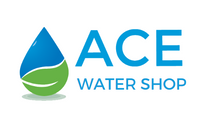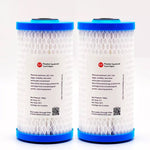You have no items in your shopping cart.
Always remember that your bench top water dispenser will always need regular maintenance.
A benchtop water dispenser would be beneficial to any house or business. It makes providing everyone with clean, clear water a breeze. It, like every device, requires regular maintenance to perform correctly. If not regularly sanitised, any wet area can contaminate viruses, bacteria, germs, and mould. As a result, the water cooler must be cleaned periodically to ensure that the water remains clean and pleasant. Let's take a deeper look at how to clean a water cooler.
WHAT'S LURKING IN YOUR DIRTY WATER COOLER?

If left dirty, water coolers might contain additional contaminants in addition to bacteria and HPC creatures.
Chemical Residue
To keep the cooler safe, you must clean it often, and most cleaning methods contain bleach or chlorine. Like those used in other sources of water, these chemicals are employed to destroy microorganisms.
If you come across a hazy or off-tasting water cooler, you must immediately alert someone in charge. For everyone's safety, the cooler may need to be washed again. It must, however, be flushed extensively through the system to ensure that no residue remains.
Algae
All that is required for algae to grow in a moist atmosphere and some light. Even fluorescent light causes it to flourish in the appropriate conditions.
Unfortunately, your bench top water dispenser fits all of these criteria. As a precaution, the office may need to test the water for algae and clean it appropriately regularly.
Water Cooler Illnesses
As you might assume, a contaminated water cooler in your office might pose a health risk to you and your coworkers.
Is the convenience of having water at your desk, which encourages you to drink more, worth the risk? The germs and bacteria hiding inside may even get you sick.
A bacteria that thrives in warm, damp settings can cause a variety of serious ailments. A person could, for example, get Legionnaires' disease, which begins with flu-like symptoms but swiftly progresses to a deadly form of pneumonia.
HOW TO MAINTAIN A BENCH TOP WATER DISPENSER
Proper Cleaning
Before handling the cooler, employees should wash their hands and use the proper amount of cleaner and chemicals within the water bottle and tap area. Then they should thoroughly rinse the bottles and faucets with water until no residue remains.
Proper Usage
- Anyone should clean up before coming to the faucet and only use clean water bottles.
- They should avoid touching the tap as much as possible, and they should never drink straight from the tap.
- They should wash their hands before replacing the water bottle or handling any portion of the water cooler.
- Then, when holding the bottle, they must avoid touching the bottle's neck close to the dispensing system.
PROPER CLEANING OF A BENCH TOP WATER DISPENSER
If your water cooler appears unclean and possibly mouldy, it's probably time to clean it. Microfibers and germs could get into your water if you don't clean it often enough, making it dangerous to drink.
Depending on how often you use your water cooler, most manufacturers recommend maintaining it every three to six months. To kill bacteria left by hands and smears from drinking glasses and cups, you should clean the knobs and exterior of the cooler more frequently.
Things You'll Need
- Sponge
- Bucket
- Clean Cloth/Microfiber Towel
- Vacuum
- Rubber Gloves
- Dishwashing Liquid
- Chlorine Bleach
- Distilled White Vinegar
Step 1: Read the Manual
Take a few minutes to study the manufacturer's cleaning recommendations before you start cleaning the cooler. If you've misplaced or thrown away your handbook, you may usually find it online.
Step 2: Unplug the Water Dispenser and Remove the Bottle
Disconnect the cooler from all power sources. Remove the bottle and let any water drain out of the operating mechanisms for around five minutes. Unplug any other appliances plugged into the same socket to avoid live electricity from coming into contact with the cleaning mixes.
Step 3: Prepare the Cleaning Solution
You can clean with liquid chlorine bleach and water or distilled white vinegar and water. Chlorine bleach is far more effective than distilled white vinegar at killing bacteria. The two cleaners should not be mixed.
- Distilled White Vinegar Cleaning Solution: Fill a bucket with one gallon of water and five cups of distilled white vinegar. Stir everything together thoroughly.
- Chlorine Bleach Cleaning Solution: Fill a bucket halfway with water and one spoonful of liquid chlorine bleach. Stir everything together thoroughly.
Step 4: Clean the bottle collar and dispenser top.
Clean the bottle collar and the top of the bench top water dispenser with the cleaning solution and a sponge.
Step 5: Fill the Water Reservoir with the Cleaning Solution.
Fill the water reservoir with two to three glasses of solution. Allow it to sit for 10 minutes to disinfect the interior. Proceed to the next step in the cleaning process.
Step 6: Drip Tray should be cleaned.
Clean the drip tray while the cleaning solution is sitting in the reservoir. If the tray is detachable, remove it to the sink and clean any debris off the grill and tray with a little dishwashing detergent. Rinse thoroughly before drying with soft microfiber.
If you can't remove the tray, clean it with a vinegar or bleach cleaning solution and thoroughly dry it.
Step 7: The Reservoir should be drained and flushed.
Drain the cleaning solution via the taps into a bucket after 10 minutes and dispose of it properly. Pour the solution down the sink or flush it down the toilet.
Drain the reservoir and refill it with fresh water to clean off any remaining solution. At least twice more.
Step 8: Clean the Air Flow Vents
Examine the back of the cooler's air vents for severe dust accumulation. Like dust on refrigerator vents, too much dust causes the cooling systems to work harder and wears them out. Use a vacuum with a dusting accessory on the hose or a throwaway duster to clear the dust.
Step 9: Change out the water bottle.
Replace the water bottle and reconnect the cooler to the power outlet.
SANITISING YOUR BENCH TOP HOT AND COLD WATER DISPENSER

The procedures above will thoroughly clean your water cooler, but you may want to go the extra mile and sanitise it with bleach. You can utilise your water cooler's self-cleaning feature instead.
Note that bleach is caustic, so you'll need to wear safety gear. To guarantee no traces of chlorine in the taps, cleanse the system thoroughly.
Things You'll Need:
- Bucket
- Big Pouring Container
- Microfiber Cloth
- Gloves
- Goggles
- Mask
- Antibacterial Wipes
- Dishwashing Soap
- Hot Water
- Bleach
- Scrubbing Brush
Process:
Step 1: Prepare the bench top hot and cold water dispenser.
Before we go on how to clean a water dispenser, we must first prepare the area. Drain the extra water from the empty bottle in a basin before flushing it down a toilet.
Step 2: Remove and wash the parts that are plastic.
If the manufacturer permits, remove the plastic parts and wash them in the dishwasher. If not, soak them for 20 minutes in hot soapy water before washing them with a towel or brush. Once they're clean, lay them flat on a cloth to air dry.
Step 3: Create a cleaning solution using bleach.
Undiluted bleach is not recommended. Make a solution instead. But first, put your safety equipment on! 1 tablespoon of bleach per gallon of water in a big pouring pitcher or bucket.
Step 4: Pour the bleach cleaning solution into the reservoir.
Fill the cooler reservoir halfway with the bleach solution and scrub thoroughly with a brush. Allow two minutes for the solution to rest before draining. Fill a bucket with water and flush it down the toilet.
Step 5: Rinse it thoroughly.
When cleaning water coolers, it's the most important step to guarantee there's no bleach residue. Five times through the reservoir, pour ordinary water. It may appear extravagant, but it's necessary.
Step 6: Reassemble the water dispenser.
Remove the clean plastic parts and replace them. Replace the water bottle and reconnect the water machine.
Step 7: Clean the outer part of the water cooler.
Remove any dirt and bacteria from the outside of the water cooler. Use antibacterial wipes to sanitise the exterior properly. You must include the new bottle, the body, and the tapes.
TIPS ON HOW TO MAINTAIN A BENCH TOP WATER DISPENSER
When you purchase a water cooler, it's critical to maintain it to last longer and is safe for people to use. Here are some of our best recommendations:
Make use of a professional cleaning service.
If you haven't cleaned the cooler in a while and aren't sure where to start, consider hiring a professional water cooler cleaning service. It's a fantastic idea, especially if your system has mould or mildew.
Wires should be vacuumed.
Dust can collect in water coolers. Appliances can be ruined by dust accumulation. Wipe the dust from the water cooler frequently and vacuum the inside wiring system with your vacuum attachment (soft-bristled) to eliminate any dust.
Lubrication is optional.
Because the air-tight seal is required, do not grease the compressor.
When the container is empty, unplug it.
Unplug the water cooler when you finish a bottle but plan to wait a few hours before replenishing it. It is a waste of resources.
Replace your purifying filters.
Replace the purifying filters every six months. Otherwise, the water quality may deteriorate, making it dangerous to drink.
FREQUENTLY ASKED QUESTIONS ABOUT MAINTAINING A BENCH TOP WATER DISPENSER
What is the average lifespan of a water dispenser?
You should anticipate your water dispenser to last roughly five years if you maintain it properly, especially if you purchased a commercial-grade one.
However, if you neglect maintenance and cleaning, your water cooler may only last a year.
Is it true that mould grows in water coolers?
Yes. Mould thrives in wet, warm environments with little air circulation. So don't be surprised if you notice mould in your water cooler. You can prevent mould growth by deep cleaning regularly before it has a chance to settle.
Will cleaning the dispenser improve the water's flavour?
Contaminated water from a filthy dispenser will never be pleasant to drink. Give your cooler a thorough cleaning if you want your water to taste better.

BUY QUALITY BENCH TOP WATER DISPENSER FROM ACE WATER SHOP
Your unit will be free of germs, bacteria and polluted water now that you know how to clean a benchtop water dispenser. It will also be more appealing to the eye, especially if you previously had mould and mildew build-up.
Although you can use distilled white vinegar for a deep clean, bleach is the best option for disinfecting the water dispenser.
Sanitise the system 2-3 times a year and clean the cooler each time you change the bottle. Last but not least, never use bleach to clean a stainless steel system. Corrosion and damage may result.
Buy a healthy choice bench top 1.8l instant heating water boiler dispenser from Ace Water Shop. We also offer different hot and cold water dispensers that may fit your needs. Visit our shop today and find out how you can improve the water quality in your home.











